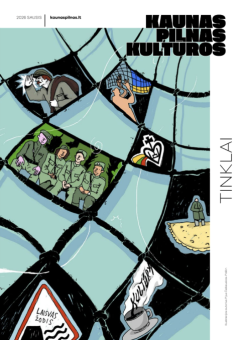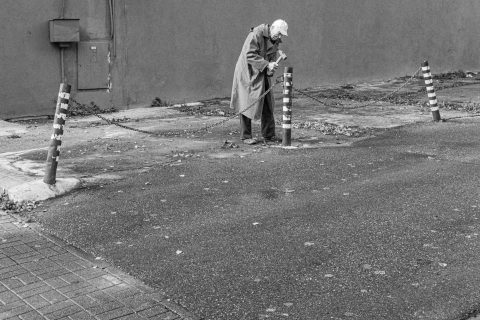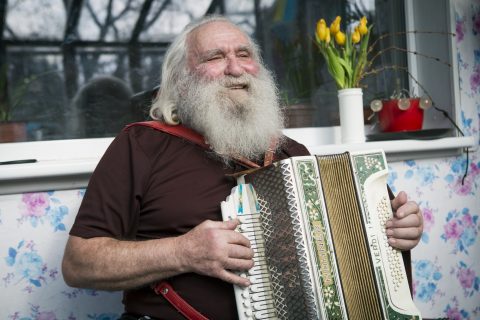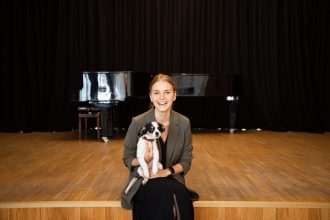We meet with Audrys Karalius in Mtevani restaurant – the establishment of which in Laisvės Avenue he contributed to several years ago – on March 20. A few hours ago, the brass band Ąžuolynas had marched down the avenue. The musicians greeted the city on the International Day of Happiness. Half-jokingly the architect said that in this way the orchestra could open the street music season in Kaunas and then also close it in autumn while marching in the opposite direction. Then, he very seriously noted that brass instruments sound especially good in an open space. I can’t disagree.
Audrys has a lot of great ideas that are heard at one time and go into slumber waiting for the right time, at the next. For example, Be stogo festival in the basin of Kauko stairs, for which a schoolchildren’s symphony orchestra Vilijampolė was organized. In general, Audrys is a big-time collector of street musicians, he never stops sharing his new discoveries on Facebook.
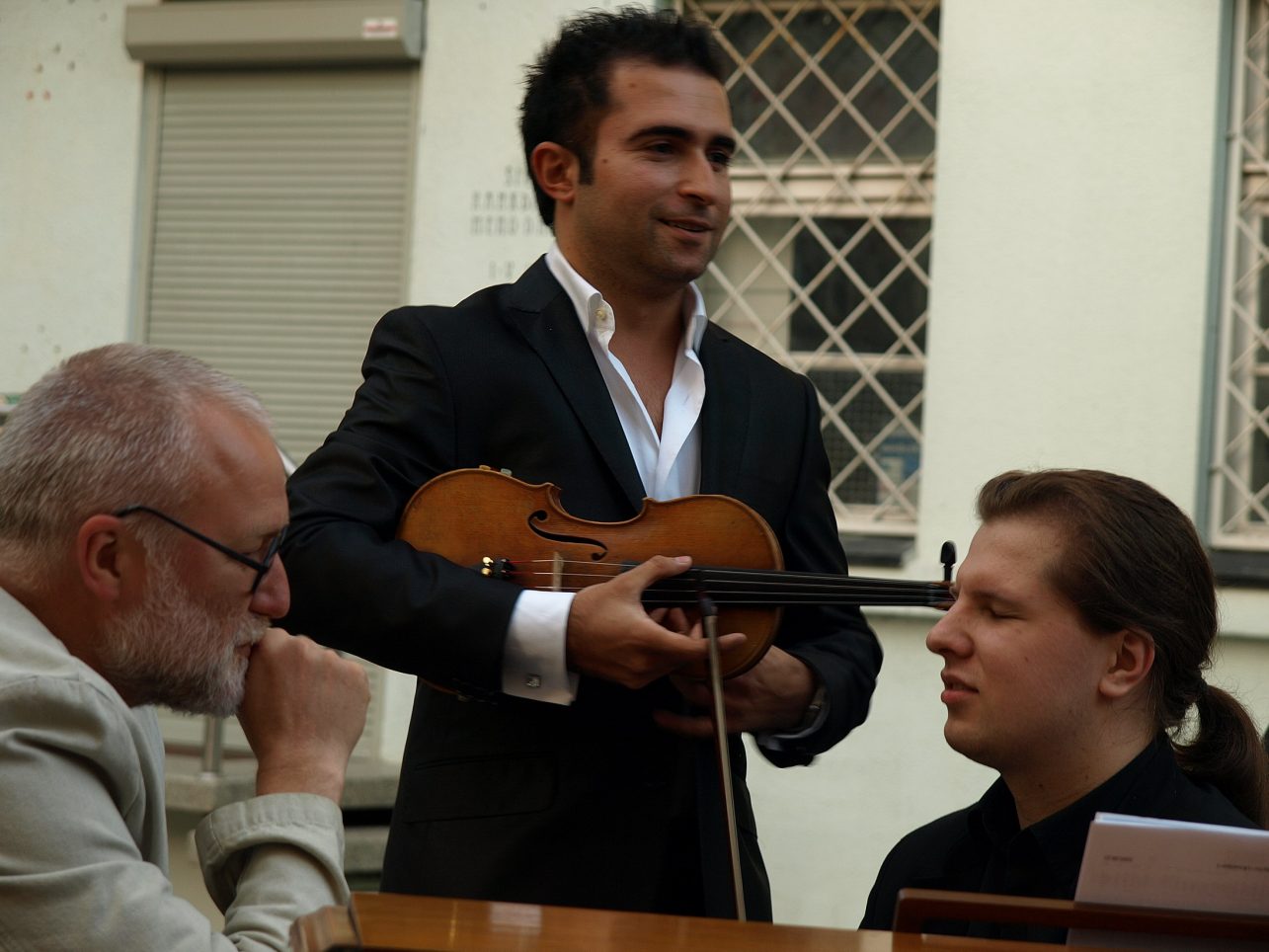
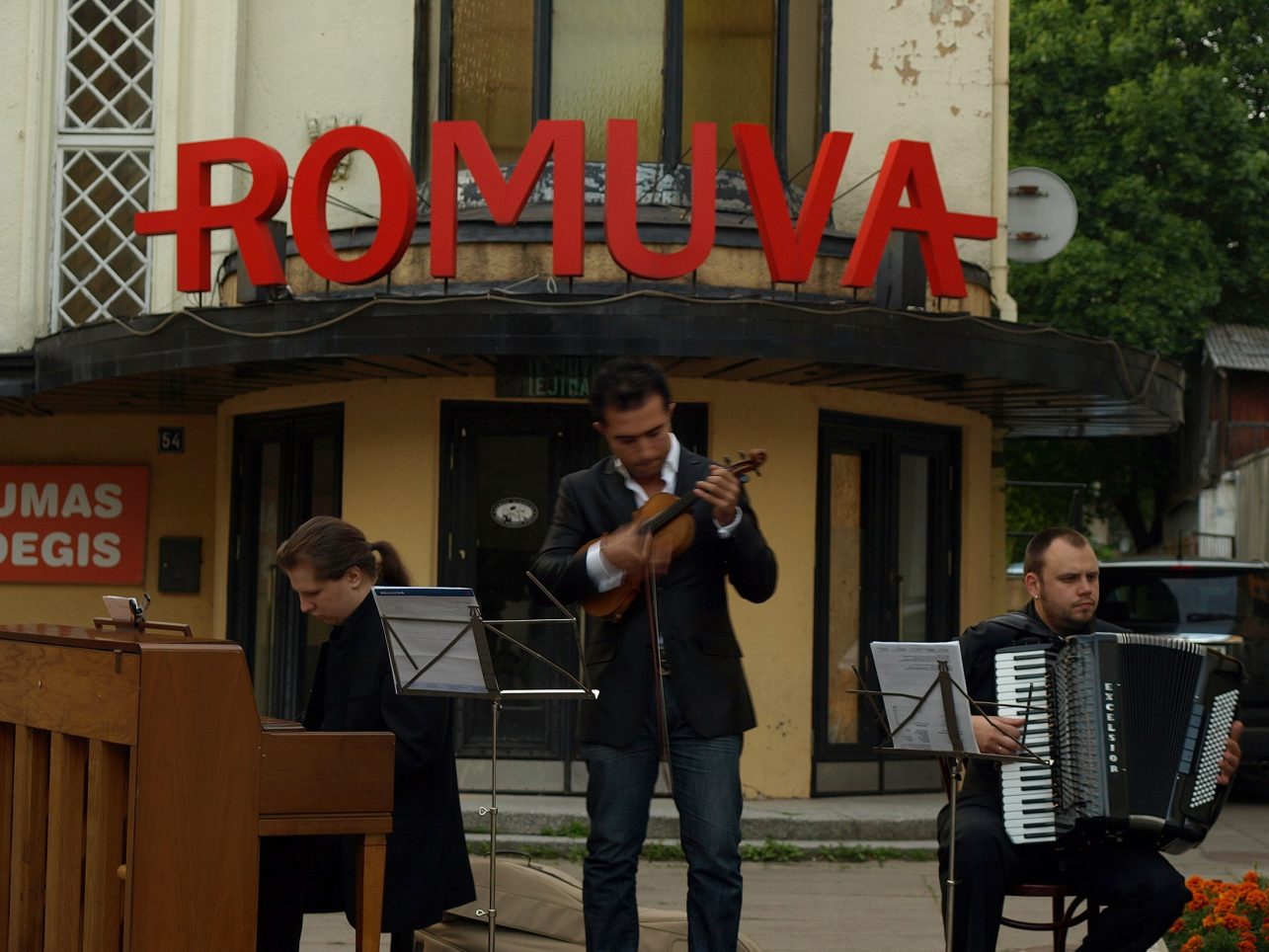

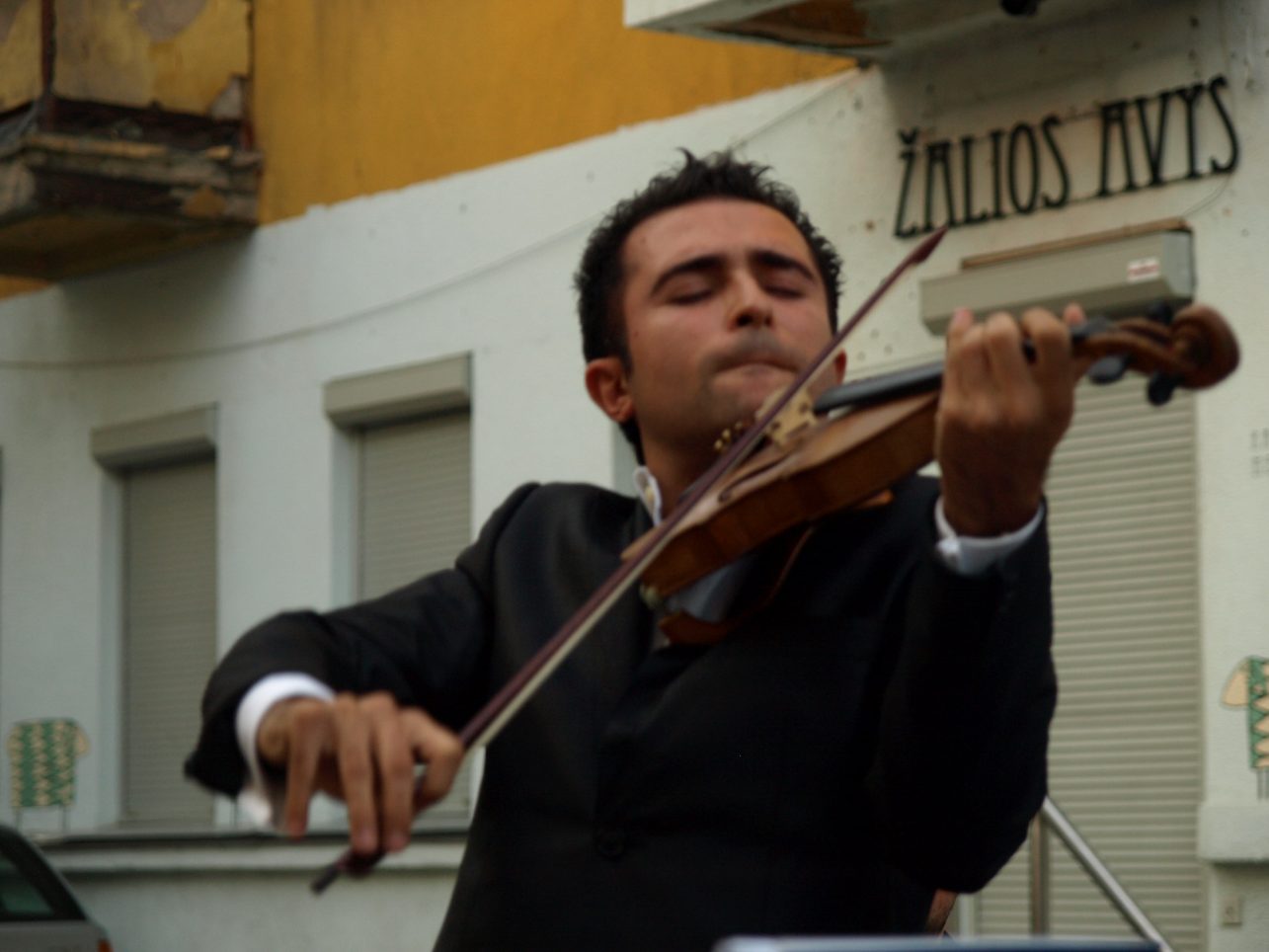
I’m interested in your opinion as an architect and activist. What does the specific sound or the absence of it say about the city and its size? The fact that it has or doesn’t have street musicians?
Let me put it differently: why do we care about street musicians? Street music culture is a metatext, it radiates and signals the city or, as they say now, it sends an urban message [laughs]. But really, if bad and vapid music is heard in the city it means that this is the type of music the city supports, these types of musicians are sponsored.
I used to upload videos to YouTube and tag them with the hashtag #musicaurbana. Only then, a few years later, Galeria Urbana was opened on Vilniaus Street. I understand the city not as matter, but as a process. The same goes for sound. Architect Jurgis Rimvydas Palys is one of the few with whom we agree on this topic. A city is not just buildings, real estate, and streets. It is also sounds (and I don’t mean music in this instance), smells, textures, and the soft architectural layer (paintings and sculptures stuck to buildings). Therefore, street music is absolutely symptomatic of the city. If it’s not there, maybe the city is sick or there’s a dictatorship (there’s no street music in Minsk), or maybe it’s home to stingy blockheads, who might say to the musician while passing by, “You’d better go to work, instead of making all this noise.” I have heard such things being said.
I’ve been walking to work via Laisvės Avenue for many years. This is a gift from God, I am grateful to him for placing me here. I live at one end and work at the other. It helps me discover and understand the city. Often, when the weather is warm, I sit down with those musicians. I don’t bother them but sooner or later we start a conversation. Very interesting people come to Kaunas! This is how I got to know some great musicians. I also meet great young people – that makes me happy. I talk to them, pupils or students, and film them sometimes. It has happened more than once that a Facebook post is later commented on by someone’s flute teacher, “Oh, that’s Severija. Thank you for noticing, this will be a great encouragement for her.” I try to give at least 10 euros to the young ones and tell them, “This is for your first album.” It has happened that I meet those people years later, in a completely different context, and they remember me.
There were also second-hand booksellers on Laisvės Avenue. But they were kicked out by the bureaucrats. A very interesting exchange took place there, fascinating people gathered at the stalls, I liked these characters. And this is a good moment to return to the fact that the city is not a thing, but a process.
The word process is the right one because it indicates a change. Walking down the same street at the same time of day, you will not necessarily find yourself in the same situation as yesterday. And one should not expect the same scenario, it would be boring otherwise.
Let’s expand on this: the city is a collective improvised event without a script and with the right for everyone to contribute. It is very important, and I can just stop somewhere, put my hat on the ground, and start singing. Maybe I will take this step one day.
When Taškas A cafe was still open on Laisvės Avenue next to the City Garden, I had come up with this format of the lowest stage. You lay the carpet in front of the cafe, and a musician stands there and performs. We organized just a couple of these, but somehow, they didn’t catch on. Another initiative was as follows: Kauno diena with the support of the municipality announced a competition for social/urban ideas, and I was a member of the jury. During the discussion, I started to offer my ideas and finally tried one of them out. You agree with the cafe, a musician comes, he gets 50 Euros at the bar as his starting salary. And they play as much as they think they are worth. We tested the format with Galeria Urbana, there were some interesting performances. But the owners of other bars did not fully understand the value of such a thing. I have implemented this idea myself about five times.
You made an investment, so to speak.
Yes. I really enjoyed it myself! And the visitors liked it, they didn’t know that the musician was “anchored”. I remembered this idea very recently, during the opening of the exhibition Palys’ City: 7 Dimensions of Identity at the Kaunas Picture Gallery. Everyone was impressed that songs were played next to the sculpture of that lady [Jadvyga Mozūraitė-Klemkienė’s sculpture Creator].
We made an agreement with the singer. I told him, “Look, the first 50 euros are from me and whatever you collect afterward will also be yours.” Palys couldn’t stop staring out the window, wondering, “Where did he come from? Look!” Of course, this is already a certain type of mix, and it requires some direction. But many said that they really felt a celebration as they were approaching the gallery. And it is no discovery of mine. Both aristocracy and bohemians have always socialized with traveling musicians and created the atmosphere of the city with their help. This is an interesting layer that can sometimes be on a very high level.
Indeed, many musicians, who now appear on the stage in concert halls, clubs, and arenas, will tell you that they had jokingly or seriously played on the street at one point or another in their lives. We interviewed several of them for this issue.
Maybe in 2003, I had the idea of organizing a street music festival. This was before Andrius Mamontovas’ Street Music Day. But the mayor at the time heard me out and said, “This is nonsense.” Although I told him that Petras Vyšniauskas promised to play, he wouldn’t believe me.
Audrys, you mentioned over the phone that you also had an idea to hand out IDs to street musicians. Who would issue them and what power would they hold?
Yes, with a personal code and a photo. And it could be issued by a secret society, for example, Žmonės kavingais veidais [Žmonės kavingais veidais gathered next to Romuva cinema in 2010 when the municipality wanted to privatize it. Thanks to the creative and really loud protest started by Audrys, the cinema remained with the city and continues to perform its function]. It would be interesting to observe how a musician – when asked for such an ID – hands it [smiles] and how the person asking reacts to it. And that power is to show that there is an ephemeral organization, a community, and this person is a part of it. “We exist.”
I once owned a similar thing – a member ID of a nonexistent architects’ club designed by Naglis Rytis Baltušnikas. It worked a few times! But a third time, I was taken with that ID to do a personality test [laughs]. It’s a fun game.
If there is no street music, maybe the city is sick.
Have you ever asked for a song?
Usually, I don’t, but I have some stories. I have a friend Giorgi Morchiladze. He is from Rumšiškės. His mother is from Lithuania and his father is from Georgia. We met a long time ago when he was still in high school. I saw him playing the accordion, but somehow different. I was surprised. We meet occasionally, he comes out to Laisvės Avenue. We have similar taste in music. When he sees me, he says, “OK, now I’ll play Bregovic!” And so, he does.
I once asked for Mozart. Once, stumbling upon a really good accordionist at the National Kaunas Drama Theatre, knowing he would know what I mean, I asked for Yann Tiersen. He spoke Russian, don’t know where he was from. What convinced me was the fact that he played masterfully and in an aptly chosen place. “Could you play some Tiersen?” I asked in Lithuanian. He played fantastically.
You mentioned Žmones su kavingais veidais.
It was a really powerful movement, I have a list of everyone involved, and I could bring them together again. I will send you a photograph later, where an Italian Christian Frattima – a conductor, who works in Milano La Scala – is playing the violin near Romuva.
What other visions do you have for the street music season in Kaunas, which was unofficially opened by Ąžuolynas today?
There could be performances dedicated to a different community every week. But it should not be artificially arranged, it should not be fake. People should not feel like you, as a listener, have an assigned role. For example, Šančiai residents would gather, and Žibuoklė Martinaitytė, who comes from Aukštieji Šančiai would perform. I don’t think she has ever played on a street. Then a Vilijampolė weekend would follow, and so on.
